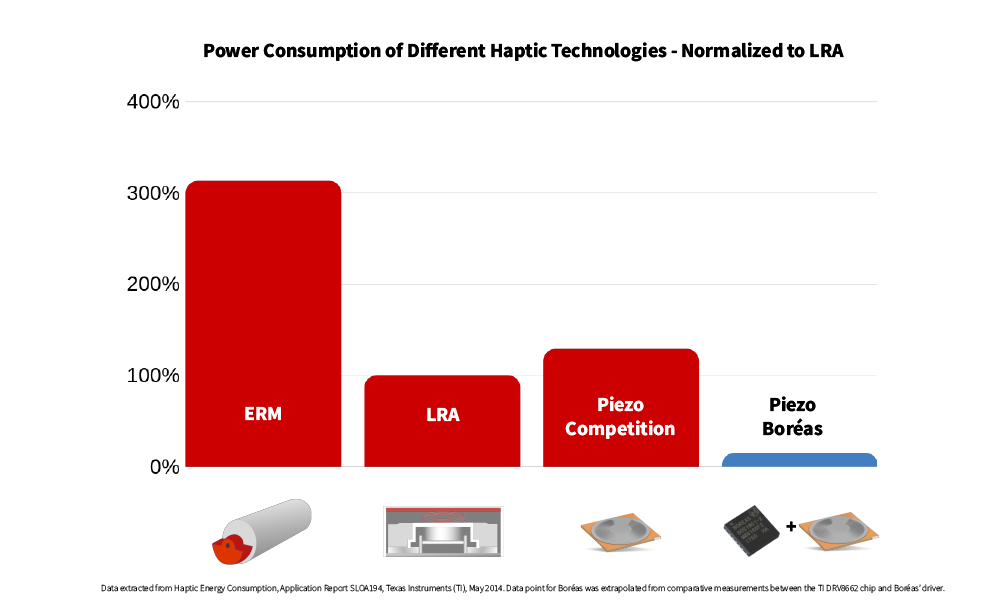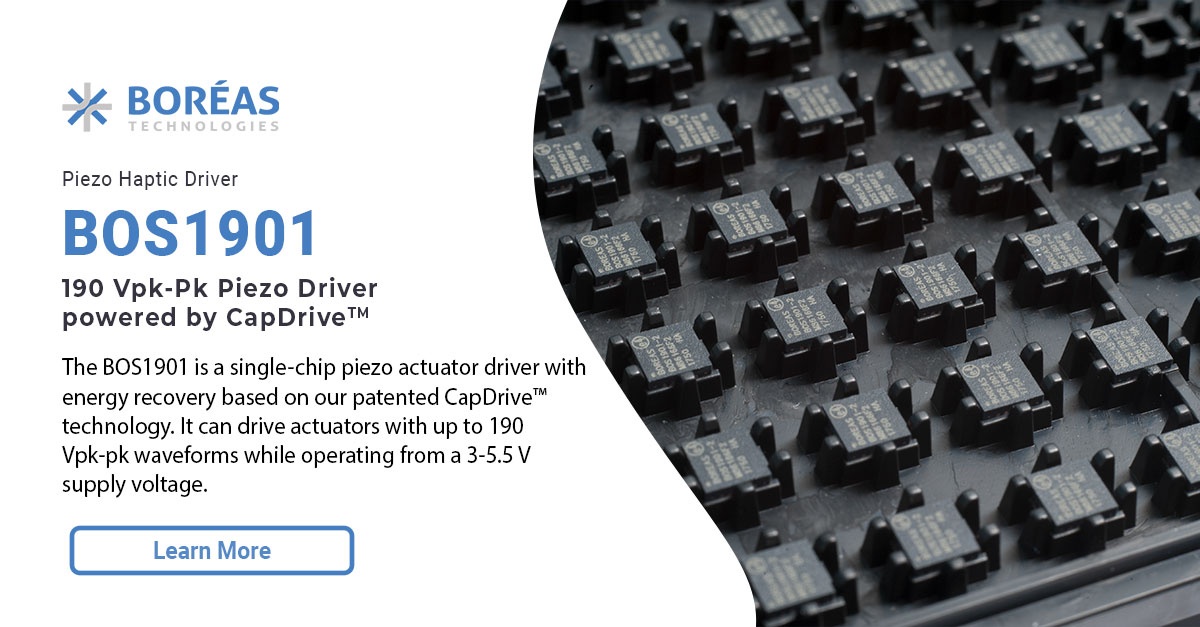
Just like sight and hearing with the high-definition television and audio, touch is about to get a big upgrade in electronics thanks to high-definition haptics. Thanks to new technologies, you’ll be able to feel way more than crude vibration from your smartphones, wearables and game controllers.
The holy grail of high-definition haptics is to feel textures on electronic devices. How is that possible? With better performing actuators.
There are currently three mainstream technologies in haptics. ERM, LRA and piezoelectric. If you want to learn more about them, we invite you to read our article on that subject here. ERM and LRA have too restrictive bandwidth to achieve the performance levels necessary to enable high-definition haptics. That’s where piezoelectric comes in.
With their mechanical advantages, like faster response time, bigger acceleration and smaller size, piezoelectric actuators have everything to create better haptic feedback in a vast array of devices. It would be easy to think that piezo haptic solutions have a bigger market size than legacy solutions like ERM and LRA, but it isn’t the case. In fact, a study from BCC Research[1] finds out that ERM and LRA still are still the most used haptic solutions. How can it be possible since piezoelectric actuators clearly have the edge and have been around for decades?
Why piezo haptic technologies adoption rate is so slow?
Piezo actuators have been around for many years. With their mechanical advantages over LRA and ERM they should have by now taken the market by storm. While piezoelectric haptics technology offers tangible advantages, they’ve been plagued by a major constraint: their power consumption. High power consumption usually means that a lot of heat is dissipated. Not a friendly combination for electronic devices where space and power are limited like smartphones, wearables and ultrabooks.
Since piezoelectric actuators need high-voltage to function properly, a driver is needed to boost the voltage. It can be a challenge with a device where power comes from a battery, like a smartphone. Those batteries voltage range is usually between 3 and 4.2 volts. Small off the shell piezo actuators, like TDK’s PowerHapTM 2.5G, need 60 volts to create haptic feedback. Generating such a high voltage is the task of the driver, and drivers until now have been consuming a lot more power than what is required to operate the piezoelectric actuator.
Previous piezo driver designs are based on a scaled-down audio amplifier architecture. This older architecture wasn’t designed with mobile devices constraints in mind. While they can generate the required waveforms at the appropriate voltages, they consume too much power to make a piezo solution viable in mobile electronic devices. And all the extra power consumed is released in heat. Not exactly what engineers and product designers are looking for in such small devices.
This is the main reason behind the slow adoption rate of piezoelectric haptic technology. Power consumption outweighs all the performance benefits of the actuator.
Piezo becomes the most power efficient haptic solution
Now the good news. Power consumption isn’t a problem anymore for piezoelectric haptic solutions.
CapDriveTM technology, Boréas Technologies’ scalable low-power piezoelectric driver architecture, offers power consumption savings by an order of magnitude from previously available drivers. How much? That is 4 to 10 times over the main competitor piezo driver and up to 20 times more efficient than legacy technologies like ERM and LRA.
This means that piezoelectric can now be the most efficient technology and offer the possibility of high-definition haptics.

Game changer in the haptics industry
The BOS1901 piezo driver, Boréas Technologies first chip based on CapDriveTM technology, is perfect for mobile devices. It is also the preferred driver for Midé Technologies piezo actuators and TDK PowerHapTM line-up.
Why is this technology so efficient? Because it was designed from the ground up for low-power applications like mobile devices, with power efficiency as the main goal. This high-power efficiency also means the piezoelectric solution dissipates less heat, making it perfect for applications where space and power is limited.
That’s not the only advantage that CapDriveTM technology offers. It also offers the industry’s smallest footprint and integrated piezo-sensing. You can learn more on our CapDriveTM technology here.
Piezoelectric can now reach its full potential and be integrated to your product design.
[1] Shalini Ramamurthy, “Haptic Technology: Applications and Global Markets,” BCC Research (June 2017).


Leave a comment